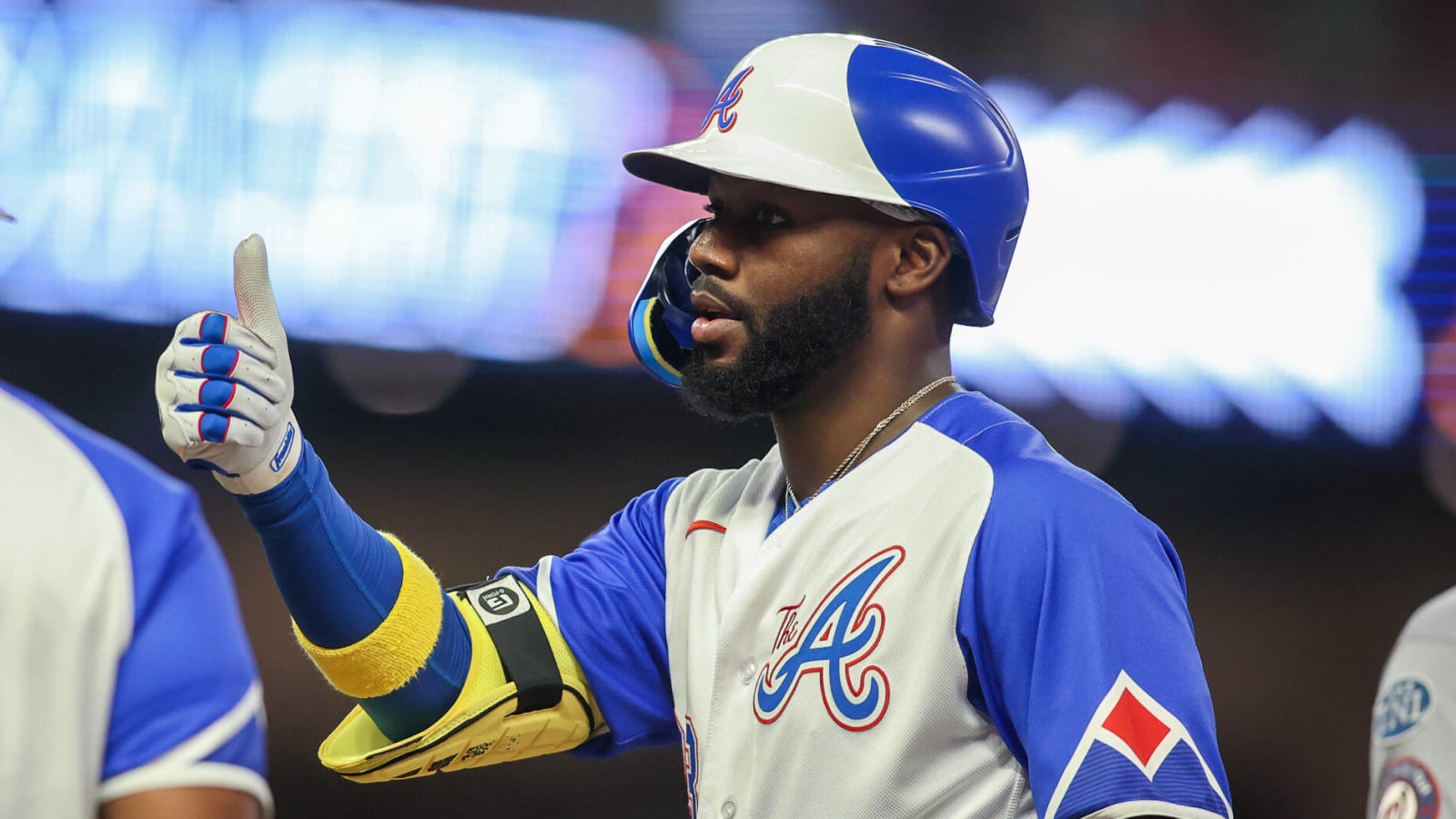
The breakout performance of center fielder Michael Harris II was one of the most exciting storylines for the Braves last season. The 21-year-old rookie was called up to the big leagues at the end of May in 2022 and never looked back, slashing a fantastic .297/.339/.514 in 441 trips to the plate while swiping 20 bases and playing excellent defense in center field. That performance earned him NL Rookie of the Year honors in addition to a few downballot MVP votes, despite the youngster only appearing in 114 games that season.
The Braves saw enough in Harris’s performance to ink the youngster to an eight-year, $72M extension before his rookie season had even come to a close, and it’s easy to see why. After all, Harris’ 134 wRC+ ranked in the top-25 among all major league hitters with at least 400 plate appearances last year, and his defense in center field was nothing short of superlative. Only Victor Robles, Myles Straw, and Michael A. Taylor outperformed Harris’s +8 Defensive Runs Saved last year among center fielders, while his +7 Outs Above Average left Harris tied with Cody Bellinger and Alek Thomas for sixth-most among center fielders with at least 250 attempts last year.
That being said, there were potential red flags in Harris’s profile last season that made it fair to wonder if he could replicate his excellent offensive season going forward. Of those, the biggest one was perhaps his strikeout rate. Of the 36 players who posted a wRC+ higher than 130 last season (min. 400 PA), just three of them struck out more often than Harris’s 24.3% rate: Aaron Judge, Mike Trout, and Julio Rodriguez. Harris, who hit 19 home runs in 2022 and posted an ISO of just .217, did not have the titanic power of that aforementioned trio with which to make up for his swing and miss tendencies. In addition, Harris’s 4.8% walk rate was by far the lowest of the bunch. In fact, Harris actually ranked in just the 11th percentile in all of baseball last year in terms of walk rate, per Statcast.
It’s easy to see why Harris was striking out so much. Harris swung at a whopping 41.7% of pitches he saw outside of the strike zone while making contact on just 59.7% of those swings. Only Javier Baez, Nick Castellanos, and Michael Chavis swung and missed at more pitches outside of the zone last year. Harris’s free-swinging approach isn’t helped by pitches in the zone much, either. The youngster posted a roughly average 67.9% swing rate on pitches inside the zone, and his 86.2% contact rate on pitches in the zone was actually slightly below league average last year. Between Harris’s reckless swing decisions and middling power numbers, it was easy to see how he could regress significantly headed into 2023. Advanced metrics agreed with that assessment, as Harris’s .368 wOBA noticeably outstripped his .335 xwOBA in 2022.
Early in the 2023 campaign, it appeared that Harris was indeed destined for a serious sophomore slump. After missing most of April due to a back injury, Harris looked brutal at the plate through the beginning of June. In his first 138 plate appearances of the season, Harris posted a brutal .163/.246/.244 slash line with a 25.4% strikeout rate and just two home runs. That being said, he was still playing his typical excellent defense and had an uncharacteristically low .207 BABIP. That was enough for the Braves to stick with their struggling youngster despite his abysmal start with the bat.
The club’s patience paid off, as Harris hit a phenomenal .335/.360/.552 the rest of the way. That impressive slash line is good for a 142 wRC+, the sixteenth-best figure in the majors over that span and on par with the likes of Bellinger and Bryce Harper. Perhaps most exciting is Harris’s improvement in terms of strikeout rate, as he punched out in just 16.5% of his plate appearances during that 100-game stretch. While Harris continued to swing too often- his 42.3% swing rate on pitches outside of the strike zone was ninth-highest in the majors, even during that torrid stretch- he made far more contact on those swings. Harris made contact on a whopping 69.8% of swings on pitches outside the strike zone while posting a 89.1% contact rate on pitches in the zone.
Taken together, Harris’s improvements in contact rate allowed him to post a strikeout rate of just 18.7% on the year good for the 71st percentile among qualified hitters. Though his cold stretch to open the year left his overall season numbers to fall short of his rookie season, as he posted a wRC+ of just 115 on the year, Harris’s peripherals in 2023 are a far better match for his production, indicating he should be able to sustain this level of offensive production going forward. In fact, Harris’s .345 wOBA in 2023 is actually ten points lower than his .355 xwOBA, indicating there could even be a small amount of positive regression in Harris’s future, if he’s able to build on his improved contact rates in 2024.
More must-reads:
- Watch: Juan Soto's three-run double gives Yankees 5-2 lead over Tigers in seventh
- Guardian place Steven Kwan on IL, promote slugging prospect
- The 'MLB Rookies of the Year' quiz
Breaking News
Customize Your Newsletter
 +
+
Get the latest news and rumors, customized to your favorite sports and teams. Emailed daily. Always free!

